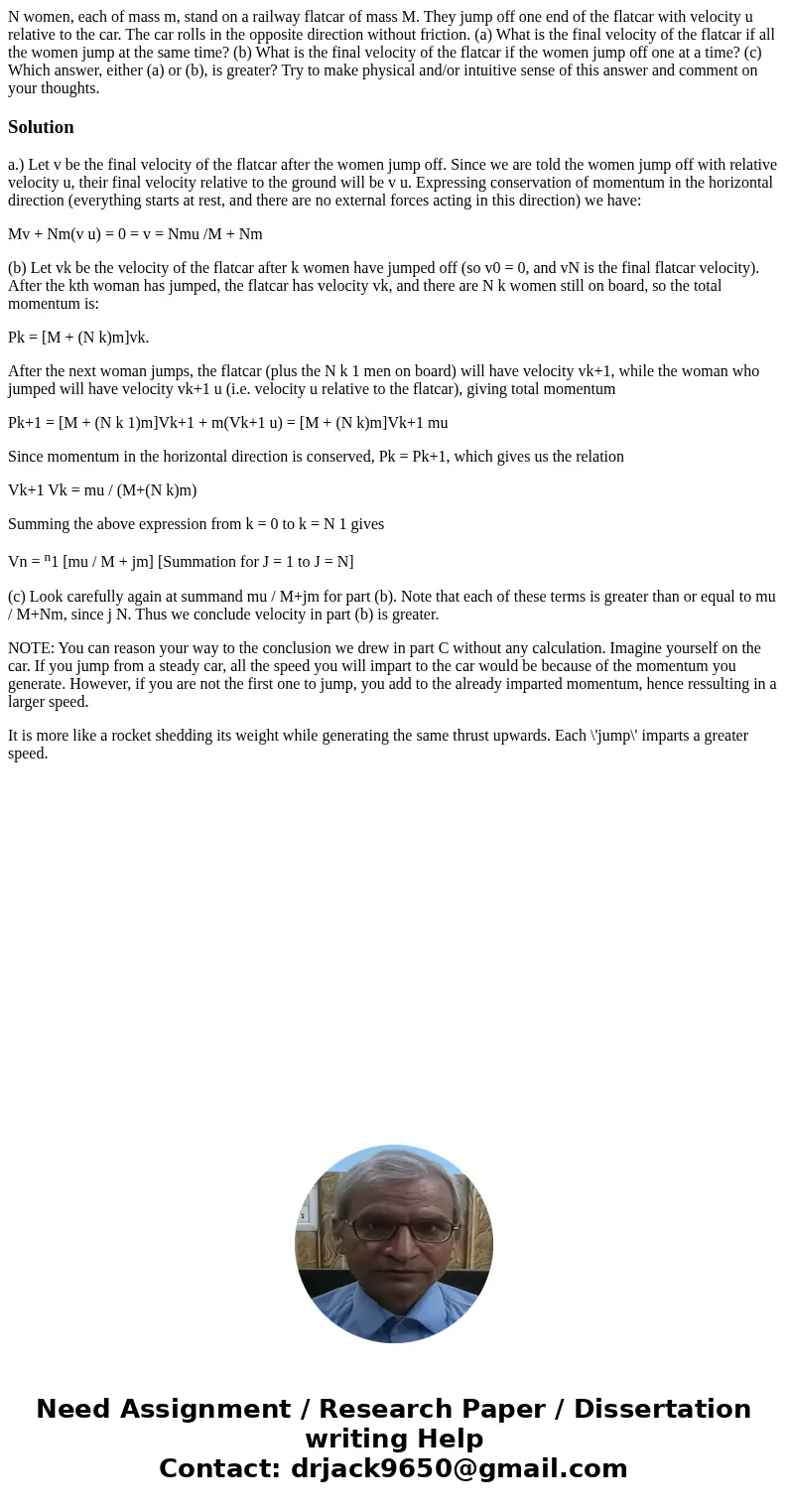N women each of mass m stand on a railway flatcar of mass M
N women, each of mass m, stand on a railway flatcar of mass M. They jump off one end of the flatcar with velocity u relative to the car. The car rolls in the opposite direction without friction. (a) What is the final velocity of the flatcar if all the women jump at the same time? (b) What is the final velocity of the flatcar if the women jump off one at a time? (c) Which answer, either (a) or (b), is greater? Try to make physical and/or intuitive sense of this answer and comment on your thoughts.
Solution
a.) Let v be the final velocity of the flatcar after the women jump off. Since we are told the women jump off with relative velocity u, their final velocity relative to the ground will be v u. Expressing conservation of momentum in the horizontal direction (everything starts at rest, and there are no external forces acting in this direction) we have:
Mv + Nm(v u) = 0 = v = Nmu /M + Nm
(b) Let vk be the velocity of the flatcar after k women have jumped off (so v0 = 0, and vN is the final flatcar velocity). After the kth woman has jumped, the flatcar has velocity vk, and there are N k women still on board, so the total momentum is:
Pk = [M + (N k)m]vk.
After the next woman jumps, the flatcar (plus the N k 1 men on board) will have velocity vk+1, while the woman who jumped will have velocity vk+1 u (i.e. velocity u relative to the flatcar), giving total momentum
Pk+1 = [M + (N k 1)m]Vk+1 + m(Vk+1 u) = [M + (N k)m]Vk+1 mu
Since momentum in the horizontal direction is conserved, Pk = Pk+1, which gives us the relation
Vk+1 Vk = mu / (M+(N k)m)
Summing the above expression from k = 0 to k = N 1 gives
Vn = n1 [mu / M + jm] [Summation for J = 1 to J = N]
(c) Look carefully again at summand mu / M+jm for part (b). Note that each of these terms is greater than or equal to mu / M+Nm, since j N. Thus we conclude velocity in part (b) is greater.
NOTE: You can reason your way to the conclusion we drew in part C without any calculation. Imagine yourself on the car. If you jump from a steady car, all the speed you will impart to the car would be because of the momentum you generate. However, if you are not the first one to jump, you add to the already imparted momentum, hence ressulting in a larger speed.
It is more like a rocket shedding its weight while generating the same thrust upwards. Each \'jump\' imparts a greater speed.

 Homework Sourse
Homework Sourse